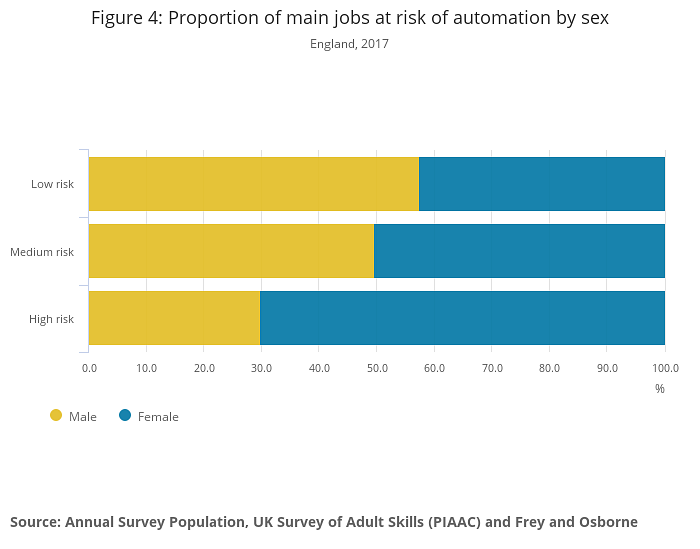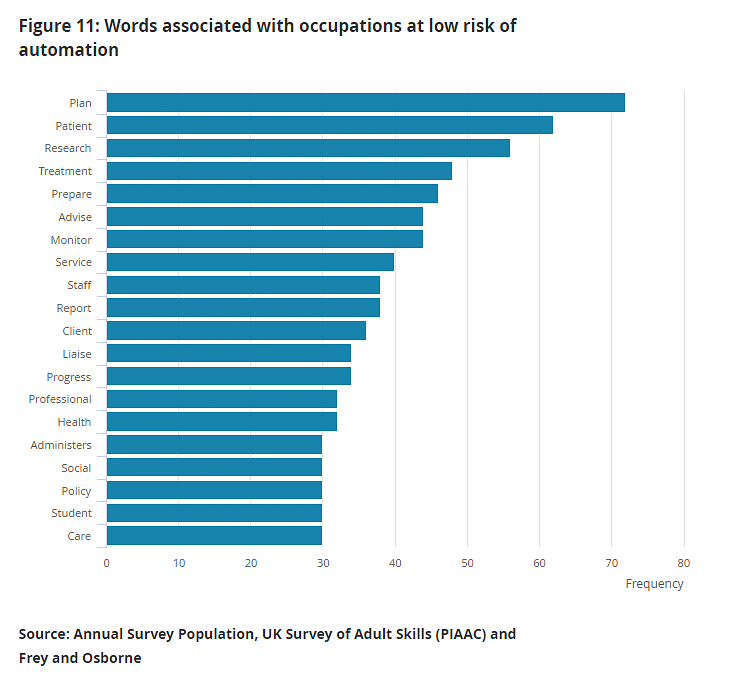The robots are coming – but whose jobs are they most likely to take?
By now, you’d be hard pressed not to have read something about how automation and technology are going to transform employment around the world. The UK’s Office for National Statistics (ONS) is adding to the debate with a new country-specific analysis.
According to the new report, 1.5 million British jobs are at high risk of automation, with women and young people more threatened than others. More than 70% of the jobs deemed to be at high risk are held by women. Among young people, 16% of employed 20- to 24-year-olds are likely to be affected.
Even so, “younger workers are often in high-risk roles temporarily, moving to roles at a lower risk of automation as their careers develop,” the statisticians wrote. “In general, the labour market is very dynamic with people moving between jobs frequently.”
The findings echo those in the World Economic Forum’s Future of Jobs Report, which shows that almost 50% of companies worldwide expect automation to lead to a reduction in their full-time workforce by 2022. It also predicts some new roles will spring up, created by automation.
Evolving workplace
“These shifts reflect unfolding and accelerating trends that have evolved over a number of recent years,” the Future of Jobs Report says. “Given that the skills requirements of emerging roles frequently look very different from those of roles experiencing redundancy, proactive, strategic and targeted efforts will be needed to map and incentivize workforce redeployment.”
While the UK statistics agency doesn’t offer an explanation for its findings, its analysis of skills at risk of replacement throws up certain attributes set to become more desirable and others that aren’t.
Job descriptions containing “machine”, “operate” and “equipment”, are the ones at highest risk, while “patient”, “research” and “treatment” are lower risk.
Skills also defined the roles identified by the World Economic Forum report as most likely to increase in importance, while other clusters of job profiles become increasingly redundant.
“By 2020, more than a third of the desired core skill sets of most occupations will be comprised of skills that are not yet considered crucial to the job today,” said research authors Saadia Zahidi and Till Leopold. “In addition, technical skills will need to be supplemented with strong social and collaboration skills.”
The findings emphasise the need for policymakers, governments and businesses to look to the future, fostering skills as well as lifelong learning.
“Words relating to management, planning and advisory skills are seen to be the most prevalent in tasks involved in low-risk occupations,” the ONS wrote. “Health-related words such as patient and treatment also appear frequently. These words reflect working with people and represent the value added by humans in these roles, which is difficult to computerise.”
This article was originally published in WeForum.






